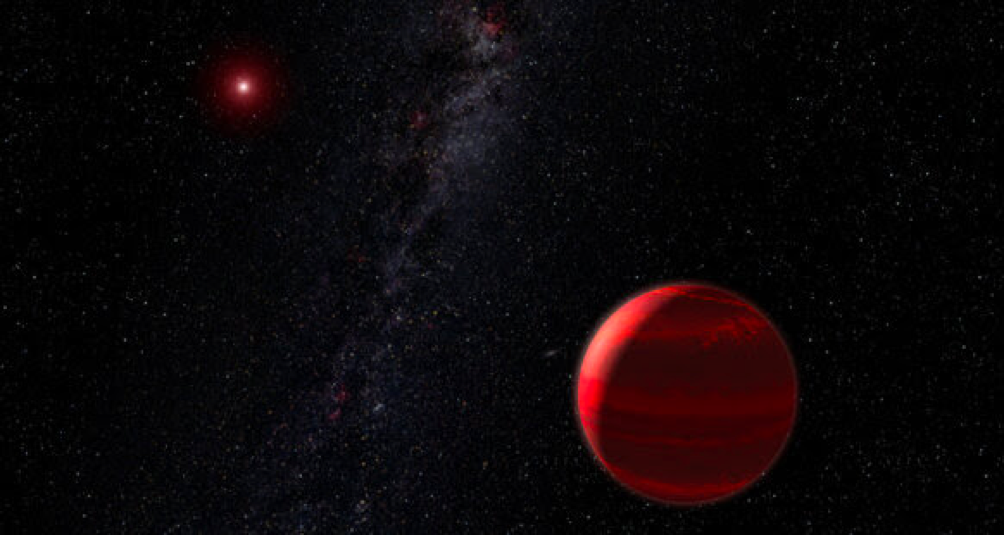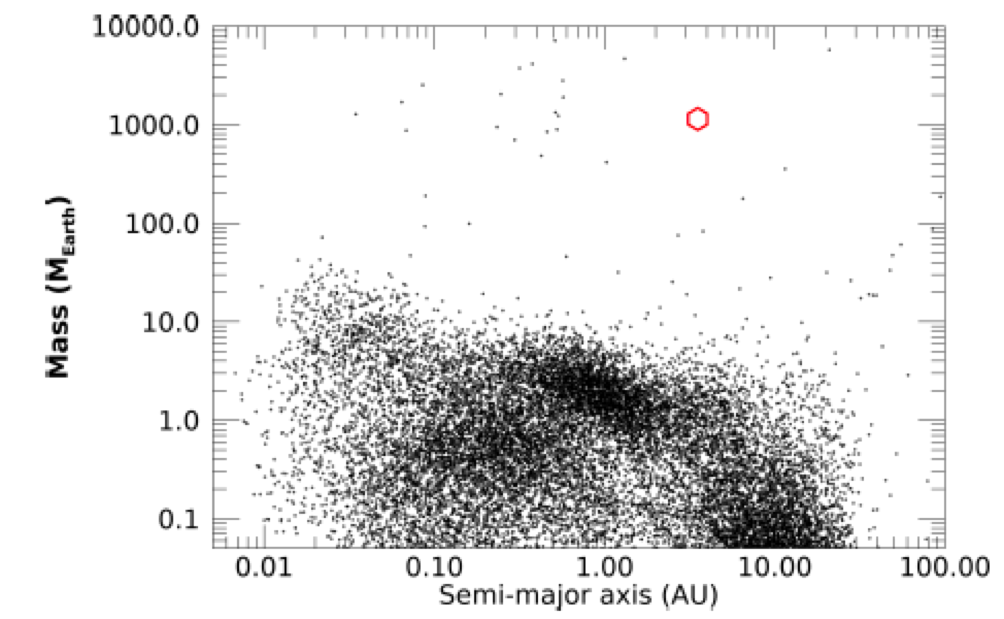by Alessandro Sozzetti
In a study accepted for publication as a Letter to the Editor of the Journal Astronomy & Astrophysics, Alessandro Sozzetti reported the determination of the dynamical mass of a super-Jovian mass planet orbiting beyond the ‘ice line‘ of the red dwarf GJ 463, about 60 light years away from the Sun. The object was initially discovered by an American team, which determined its minimum mass based on radial velocity measurements.
Thanks to the combination of the existing radial velocity data and astrometric acceleration measurements of the Hipparcos and Gaia missions, it was possible to determine that the companion, GJ 463 b, orbits at 3.5 astronomical units from its star and has a mass of 3.6 Jupiter masses. The central star has less than 50% of the mass of our Sun, and the measurement of the true mass of such a massive and long-period planet around a star of this type is a rare event. Such companions are extremely difficult to form in the context of the most accredited formation model of giant planets (core accretion), which provides for a very low occurrence rate (if any). It is therefore possible that GJ 463 b constitutes a rare example of a gas giant planet that formed via the alternative mechanism of local gravitational instability of the original protoplanetary disk.
For more details, it is possible to read the following paper published by Alessandro Sozzetti:

Fig. 1: Artist’s conception of a the red dwarf star orbited by a distant gas giant planet. Credits: NASA, ESA and G. Bacon (STScI) – Self-made JPEG version of original TIFF image at Hubble website.

Fig. 2: Black dots show a synthetic population of planets as a function of the orbital separation (expressed in astronomical units) and mass (expressed in Earth masses) around a 0.5 solar-mass central star. The large red hexagon identifies the location of GJ 463 b. As we can see, an object with the properties of GJ463 b is not reproduced by planetary population synthesis models.
